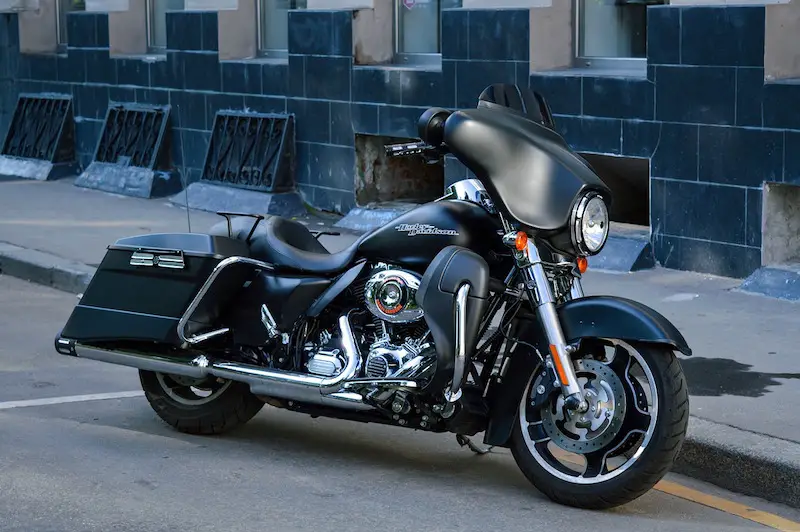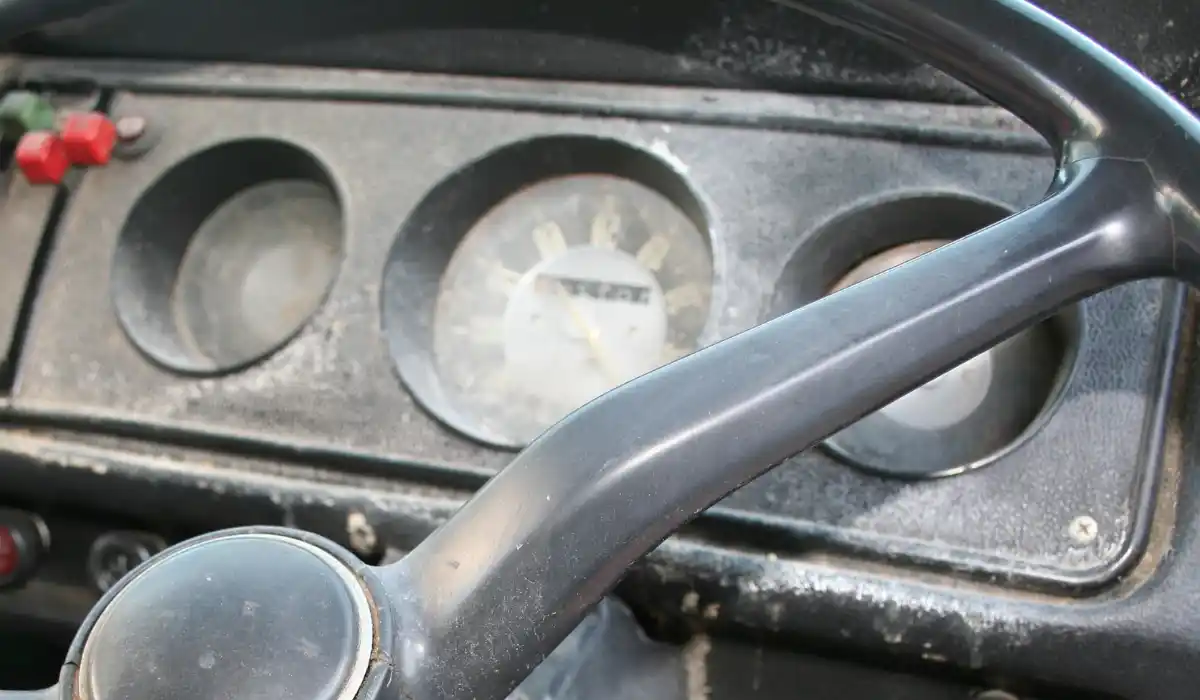Let’s be up front, Harley Davidson bikes aren’t known to be the most reliable or durable among the riding community. Despite that, there are enough Harley riders that most problems are well-documented with easy enough solutions.
One of the main issues that plagues Harley owners have to do with the voltage regulator. If you know the symptoms, you’ll be able to manage your voltage regulator problems before it becomes too big of an issue.
In this post, let’s take a look at some of the Harley-Davidson voltage regulator symptoms you should be aware of as a Harley owner. We’ll also dive into the solutions for fixing the voltage regulator. Let’s jump right into it!

Jump Ahead To:
What is the Harley Davidson Voltage Regulator?
The Harley-Davidson voltage regulator is an electrical component that controls the amount of voltage going into the instrument gauges, speedometer, and gauge cluster. It’s required by the motorcycle electronic system to display the engine speed and other important vitals.
Problems with the Harley voltage regulator will eventually lead to issues with information being properly displayed. This includes the state of your motorcycle’s engine, it’s running condition, speed, and everything else that’s revealed on the instrument cluster.
It also happens to be one of the most common causes of electrical problems with Harley Davidson bikes. Along with the battery, it’s the voltage regulator that many riders will be familiar with when it comes to diagnosing electrical issues.
In order to fix the voltage regulator, you need to be aware of the symptoms. Let’s take a look at those in the next section.
Harley Davidson Voltage Regulator Symptoms

There are a few symptoms you may start noticing that reveal an issue with the voltage regulator. Keep this in mind if you’re having trouble with your Harley before worrying that it’s more serious of a problem.
Flickering Gauges
One of the first symptoms of a failing or faulty voltage regulator are dim or flickering gauges. Since it’s the regulator that supplies power to the gauges, the gauges will start to dim and flicker if there’s an issue with the power supply.
It can be difficult to notice this issue during the day, especially if you’re riding in bright conditions. However, if you’re riding at night or in low light conditions, you’ll definitely see an issue with the gauges and turning signals.
If you notice your gauges flickering, check the turning signals as well. Park the bike, turn on the signal, and check to see if the signal is flickering.
Instrument Cluster Fails to Turn On
Another telltale sign that you’re dealing with a faulty Harley voltage regulator is that the instrument cluster fails to turn on. You should notice this after putting in the key and turning it to the on position.
With a faulty regulator, none of the normal lights will illuminate. What’s happening is that there is no power getting to the instrument cluster, which is why it’s disabled.
While you’ll probably be able to turn on the bike and go for a ride, you’ll be missing out on the instrument cluster information. After checking that the battery isn’t faulty, if there’s still an issue here it’s probably with the voltage regulator.
Cluster Displays Erratic or Inaccurate Reading
One more obvious Harley voltage regulator symptoms is that the cluster displays erratic or inaccurate readings. You might see the speedometer jumping up and down or various gauge lights flashing on and off.
Seeing these symptoms on your bike immediately reveals that there is an issue with the voltage regulator. It’s not safe or recommended to ride if you’re not able to determine your speed or become alterted of any other warning lights.
Again, while you could keep riding without a properly functioning instrument cluster, this is not recommended or a good idea. You won’t be able to determine your speed or know if there are any other issues with your bike.
Testing the Voltage Regulator

If you noticed your Harley losing voltage or suffering from voltage regulator symptoms, it’s possible to test the regulator for bleed. Voltage is only allowed to travel in one direction, from the stator to the battery, when the regulator is working properly.
If the regulator is leaking voltage, the battery will also be leaking voltage. This is a condition that’s easy to test.
Using a multimeter, clip the test light on to the negative terminal of your battery. Next, unplug the regulator to get an accurate voltage reading.
Using the test light, touch each of the regulator terminals one at a time. If the test light illuminates, the regulator is faulty and needs to be replaced.
Battery voltage isn’t supposed to be present on this side of the regulator. Should you notice any issues, test the charging system as well.
How to Fix the Voltage Regulator on Your Harley
The voltage regulator on a Harley is responsible for regulating the electrical output of the motorcycle’s charging system.
When the voltage regulator fails, it can cause a range of electrical problems, including a dead battery, flickering headlights, and other issues.
Here’s a step-by-step guide on how to fix the voltage regulator on a Harley:
1. Gather the necessary tools and materials
To fix the voltage regulator on a Harley, you’ll need a multimeter, a screwdriver, and a replacement voltage regulator.
Make sure that you have the correct replacement voltage regulator for your Harley model.
2. Disconnect the battery
Before starting any electrical work on your Harley, it’s important to disconnect the battery to prevent electrical shock or damage.
Remove the negative battery cable from the battery terminal and secure it away from the battery.
3. Locate the voltage regulator
The voltage regulator on a Harley is typically located near the battery, either on the frame or on the back of the engine.
Consult your Harley owner’s manual or a repair manual for the exact location.
4. Test the voltage regulator
Using a multimeter, test the voltage regulator to determine if it is functioning properly.
Start the motorcycle and set the multimeter to the DC voltage setting.
Touch the positive multimeter lead to the positive battery terminal and the negative lead to the negative battery terminal.
Check the multimeter reading and compare it to the specifications in your Harley owner’s manual. If the reading is outside the recommended range, the voltage regulator may need to be replaced.
5. Remove the old voltage regulator
Using a screwdriver, remove the bolts or screws that secure the voltage regulator to the Harley.
Carefully disconnect the wires from the voltage regulator and remove it from the motorcycle.
6. Install the new voltage regulator
Install the replacement voltage regulator in the same location as the old one, using the bolts or screws to secure it in place.
Connect the wires to the new voltage regulator, making sure that they are properly connected and tightened.
7. Test the new voltage regulator
Start the motorcycle and test the new voltage regulator using the same multimeter method as before.
Check the multimeter reading and compare it to the specifications in your Harley owner’s manual. If the reading is within the recommended range, the new voltage regulator is functioning properly.
8. Reconnect the battery
Once you have tested the new voltage regulator and confirmed that it is working properly, reconnect the negative battery cable to the battery terminal and secure it in place.
9. Test the electrical system
Start the motorcycle and test the electrical system, including the headlights, turn signals, and other components.
Make sure that everything is working properly and that there are no electrical issues.
By following these steps, you can fix the voltage regulator on your Harley and restore proper electrical function to your motorcycle. If you are unsure about any step in the process, consult your Harley owner’s manual or a repair manual, or seek the assistance of a professional mechanic.
Fixing Your Voltage Regulator Doesn’t Have to be Hard

Not only is it disappointing and frustrating, it’s also unsafe to have to ride your motorcycle with a faulty voltage regulator. If your bike is suffering from electrical issues, start by checking for the regulator symptoms that we covered in this post.
It’s a good idea to always follow regular preventive maintenance when it comes to properly maintaining your motorcycle. This will allow you to discover issues and symptoms before they become serious problems.
Regardless of the Harley-Davidson you’re riding, all of them come with voltage regulators. In order to know whether or not the regulator needs to be replaced, a proper diagnosis needs to be carried out.



